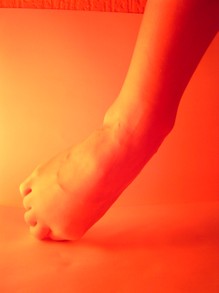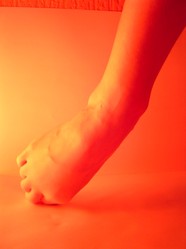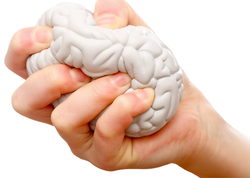Metatarsalgia is a symptom of pain in the forefoot. It is essentially pain and tenderness of the plantar heads of the metatarsal bones that bear a disproportionate amount of the body weight.
In normal gait, at “heel strike,” the moment of ground contact that ends the swing phase and begins the stance phase, the foot is inverted due to anterior tibial muscle function. As the foot progresses through the stance phase, the weight bearing progresses along the outer aspect of the foot and gradually across the metatarsal heads until the last phase of stance, when the foot pronates due to the weight-bearing torque of tibial internal torsion. In static stance, the first metatarsal carries two sixths of the body weight and the others one sixth each. In a pronated or “splayed” foot, the balance is upset. The transverse arch depresses and greater weight is borne on the second, third, and fourth metatarsal heads. The interosseous ligaments that support the arch are stretched, permitting the forefoot to broaden and “splay'” out.





 How to deal with Anxietyon 10/20/2015
How to deal with Anxietyon 10/20/2015
 What Causes Anxiety and Stresson 10/20/2015
What Causes Anxiety and Stresson 10/20/2015
 Understanding How to Stop Tooth Painon 10/20/2015
Understanding How to Stop Tooth Painon 10/20/2015
 What is Foot Pronationon 09/07/2015
What is Foot Pronationon 09/07/2015


Comments